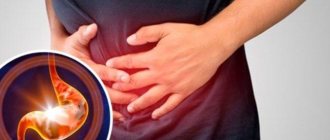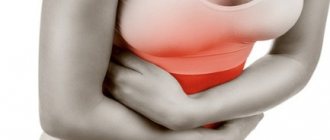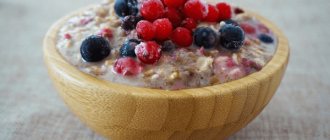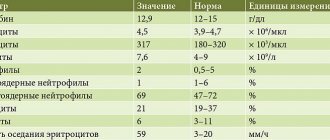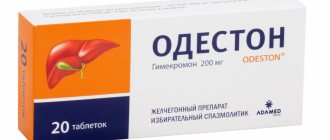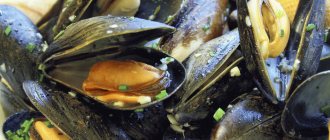Atrophic gastritis is considered unfavorable among other gastritis, because it most often becomes a precursor to oncological tumors of the stomach.
Adequate treatment and strict adherence to nutritional recommendations helps to “keep” the disease in stable remission. Pedantic adherence to medical prescriptions is an unshakable rule for patients with atrophy of the gastric mucosa.
What happens in the stomach
With atrophic gastritis, the activity of parietal (lining) cells of the organ mucosa is disrupted, and the production of hydrochloric acid is disrupted. The main cells responsible for the production of pepsinogen are also affected. Over time, damaged parietal and chief cells are replaced by mucocytes or epithelial cells that are not able to produce the necessary hydrochloric acid and pepsinogen, and digestive functions are impaired. To correct the condition, doctors prescribe medicinal enzyme preparations that help improve the digestive process.
Important! For atrophic gastritis, along with following the principles of diet and proper nutrition, you should regularly take prescribed medications.
How to choose the right cheese
It is advisable to buy cheese in places where it is cut from a whole head in front of you, and not where it is offered in already packaged pieces. Evaluate the cut of the product. Its color should be natural. Most buyers can tell if a product contains dyes. Too yellow, reddish, brown color should give you doubts. Exceptions are expensive varieties that are specially colored with natural ingredients - beet juice, spinach.
Do not hesitate to ask the seller for the composition of the selected product. He is required to present the packaging, which contains all the information about the cheese, its composition, expiration date, certificates and standards in accordance with which the product is produced.
General principles of nutrition for atrophy
With an exacerbation of atrophic gastritis, as with an exacerbation of any other forms of the disease, diet 1 A according to Pevzner is indicated (the modern designation is the PP table).
Since the diet is depleted in nutrients, it is not prescribed for a long time. Usually the acute period does not last more than 2 - 3 days, so the PP table is indicated only for this period. After the diet is slightly expanded, the patient is transferred to table 1 B, and subsequently to table 2. The timing of the “transfer” is very individual and completely depends on the patient’s well-being.
In remission of atrophic gastritis, the main one is diet No. 2, the main principles of which are as follows:
- Normalization of gastric secretory activity.
- Stimulates the motor function of the stomach, eliminates stagnation of the food bolus.
- Reducing fermentation processes.
- Complete composition: proteins and fats 100 grams per day, carbohydrates – 400 grams. The total calorie content per day is 3000 kcal.
- You should eat 5-6 times a day.
- You can salt food, the salt norm per day is from 12 to 15 grams. Liquid consumption (drinking) is allowed up to 1.5 liters.
Cheese for gastritis - benefit or harm
Debates regarding whether it is possible to eat cheese with gastritis are ongoing. Some doctors speak out categorically and strictly prohibit the use of this product. Other specialists are more loyal. Strict prohibitions apply to the acute period of development of the disease. At this time, you should refuse food altogether. Therapeutic fasting for 1-2 days gives excellent results. Severe pain in the abdominal area recedes, inflammatory processes are no longer so intense.
After the first or next attack, you need to come out of fasting gradually. During the first week, cheese is also strictly prohibited. At this time, the patient eats viscous porridges, vegetable broths, and boiled vegetables. When food digestion processes are established, it’s time to expand your diet. At this stage, you can introduce cheese in minimal quantities. It needs to be grated or cut into small slices. In this form, the product will be digested faster.
Cheese contains a lot of useful substances - enzymes that help digest food, numerous vitamins and microelements. Hard cheese is the leader among dairy products in terms of protein and calcium content. These substances are necessary not only to ensure strong bones and elasticity of muscle mass. They have a positive effect on the functioning of the gastrointestinal tract. Protein foods are absorbed better than carbohydrate foods.
What not to eat
With atrophic gastritis, nutrition is physiologically complete, only coarse fiber, fresh milk, spicy dishes and spices, and smoked foods are limited.
Only the following products are completely excluded from the diet:
- too sour and spicy dishes;
- mushrooms;
- animal fats;
- radish, radish, turnip;
- lentils and bulgur, all legumes;
- alcohol, carbonated drinks.
As you can see, the restrictions on the composition of the diet for atrophy are not too significant, so the patient’s diet is quite varied. Most foods are allowed to be consumed, so the menu for diet No. 2 almost corresponds to the diet of a healthy person.
Important! Atrophic gastritis is almost always accompanied by a decrease in acidity, so the menu is designed to stimulate the production of HCL. There is no fundamental difference in nutrition for patients with reduced and zero acidity. Zero acidity is corrected medicinally with hydrochloric acid preparations.
Table 2 according to Pevzner: important rules
• Small meals and chewing food thoroughly, which will allow foods to be better absorbed and not linger in the stomach.
• Including foods rich in vitamin C in the diet: kiwi, currants, green vegetables, bell peppers, citrus fruits. This is necessary for gastric juice to achieve the required level of acidity, which affects the absorption of beneficial elements.
• Cooking dishes with lemon juice, apple cider vinegar, wine, juices, and sour berries will activate the production of gastric juice, which is necessary for complete digestion. Diet No. 2 for gastritis with reduced secretion will be incomplete if this simple rule is not taken into account.
• The consumption of fatty and difficult-to-digest foods (legumes, corn, goose and duck meat, hard-boiled eggs, dried fruits, milk) should be reduced to a minimum. Fatty foods slow down the secretion of gastric juice, and “heavy” foods remain in the stomach for a long time, which burdens the digestion process.
What products can
The list of products that are allowed for atrophic gastritis is quite large, so we will consider it, dividing it into small groups.
Bakery products
Preference is given to day-old wheat bread made from white or gray flour. If, for some reason, there is no yesterday’s bread in the house, fresh bread needs to be dried in the oven. Crackers, biscuits, and unsweetened cookies are allowed.
Dairy
Fresh milk should be excluded, as it increases gas formation and enhances fermentation in the intestines.
Fresh cottage cheese is allowed (it is better to wipe it) and dishes made from it, steamed or baked. Ryazhenka, kefir, and yogurt are allowed. You can eat mild rennet and curd cheeses. It is better to use sour cream as an addition to a dish; you can also prepare sauces based on it. Fresh milk is only added to coffee drinks, cocoa, tea.
Butter, egg
All types of butter are allowed, with the exception of the soft type "Rama". When choosing vegetable oil, give preference to an unrefined product. You can also use ghee. Chicken or quail eggs are cooked soft-boiled or used to make omelettes. Alternatively, cook poached eggs without vinegar. Instead of vinegar, you can use lemon juice in small quantities. Raw eggs are allowed to be added when preparing other dishes.
Soups
The basis for first courses can be different - vegetable broth, low-fat meat, chicken, fish broth. Meat for first courses can be pureed or cooked in the form of meatballs and jackdaws. Vegetables are cut into small pieces before cooking.
Meat and sausage products
The main requirement for meat products for atrophic gastritis is the exclusion of fatty parts, tendons, and bone inclusions. Lean parts of beef and rabbit meat, turkey fillet, calf meat, and beef tongue are used. The permitted methods for preparing meat products are traditional for dietary nutrition - they can be baked or boiled, cooked in a slow cooker/steamer, or stewed.
Interesting! In the atrophic form of the disease, it is allowed to eat fried foods, provided that the frying is carried out without breading (the product is not rolled in flour, breadcrumbs, or dipped in batter). Fried food is the exception rather than the rule, but for a holiday table you can allow the patient this method of preparation.
The permitted sausage products are premium quality dietary sausages, low-fat ham, jellies made from beef, and meat pates.
Fish products
Lean fish is allowed - pike perch, carp, cod. The cooking methods are the same as for meat dishes; frying without breading is also allowed. You can prepare jellied dishes; sometimes pre-soaked herring is allowed. Fish can be served in portions, as well as in the form of daws, meatballs, aspic or pate. For table No. 2, black caviar is allowed.
Vegetables, fruits, natural juices
For atrophic gastritis, it is better to chop vegetables and use them for preparing side dishes.
You can use green peas whole without chopping them. Tomatoes are allowed to be used raw. Freshly prepared non-acidic vegetable and fruit juices, as well as sauerkraut juice, are not prohibited. It is better to heat-treat fresh fruits and berries and use them for making drinks and desserts.
Among sweet dishes, marmalade, marshmallows, and marshmallows are allowed.
Fully or partially limited products
The diet for atrophic gastritis excludes the use of:
- Foods that are difficult to digest in the stomach: fatty rough meat and fish, baked goods, raw fruits and vegetables, black bread, smoked meats, mayonnaise, mushrooms, fish/poultry skin, cartilage, fried pies, legumes, margarine, pancakes, fresh milk.
- Products that contribute to intestinal bloating and increased gas formation: legumes, raw vegetables, okroshka, millet soup.
- Some types of cereals (corn, millet, barley, pearl barley).
- Products that irritate the mucous membrane: garlic, salty/smoked foods, fresh onions, hot seasonings, turnips, radishes, radish, canned snack foods, rutabaga.
- Hot sauces, vinegar, ketchup, pepper and spices.
- Undiluted fruit/vegetable juices, strong black tea, coffee, sour fruits, kvass, alcoholic beverages.
Table of prohibited products
| Proteins, g | Fats, g | Carbohydrates, g | Calories, kcal | |
Vegetables and greens | ||||
| vegetables legumes | 9,1 | 1,6 | 27,0 | 168 |
| swede | 1,2 | 0,1 | 7,7 | 37 |
| cabbage | 1,8 | 0,1 | 4,7 | 27 |
| sauerkraut | 1,8 | 0,1 | 4,4 | 19 |
| green onion | 1,3 | 0,0 | 4,6 | 19 |
| bulb onions | 1,4 | 0,0 | 10,4 | 41 |
| cucumbers | 0,8 | 0,1 | 2,8 | 15 |
| canned cucumbers | 2,8 | 0,0 | 1,3 | 16 |
| white radish | 1,4 | 0,0 | 4,1 | 21 |
| turnip | 1,5 | 0,1 | 6,2 | 30 |
| canned tomatoes | 1,1 | 0,1 | 3,5 | 20 |
| horseradish | 3,2 | 0,4 | 10,5 | 56 |
| spinach | 2,9 | 0,3 | 2,0 | 22 |
| sorrel | 1,5 | 0,3 | 2,9 | 19 |
Mushrooms | ||||
| mushrooms | 3,5 | 2,0 | 2,5 | 30 |
Cereals and porridges | ||||
| corn grits | 8,3 | 1,2 | 75,0 | 337 |
| pearl barley | 9,3 | 1,1 | 73,7 | 320 |
| millet cereal | 11,5 | 3,3 | 69,3 | 348 |
| barley grits | 10,4 | 1,3 | 66,3 | 324 |
Confectionery | ||||
| candies | 4,3 | 19,8 | 67,5 | 453 |
Ice cream | ||||
| ice cream | 3,7 | 6,9 | 22,1 | 189 |
Cakes | ||||
| cake | 4,4 | 23,4 | 45,2 | 407 |
Raw materials and seasonings | ||||
| mustard | 5,7 | 6,4 | 22,0 | 162 |
| ginger | 1,8 | 0,8 | 15,8 | 80 |
| ketchup | 1,8 | 1,0 | 22,2 | 93 |
| mayonnaise | 2,4 | 67,0 | 3,9 | 627 |
| ground black pepper | 10,4 | 3,3 | 38,7 | 251 |
| chilli | 2,0 | 0,2 | 9,5 | 40 |
Dairy | ||||
| kefir | 3,4 | 2,0 | 4,7 | 51 |
| sour cream | 2,8 | 20,0 | 3,2 | 206 |
| curdled milk | 2,9 | 2,5 | 4,1 | 53 |
Meat products | ||||
| pork | 16,0 | 21,6 | 0,0 | 259 |
| ham | 22,6 | 20,9 | 0,0 | 279 |
Sausages | ||||
| dry-cured sausage | 24,1 | 38,3 | 1,0 | 455 |
| sausages | 10,1 | 31,6 | 1,9 | 332 |
| sausages | 12,3 | 25,3 | 0,0 | 277 |
Bird | ||||
| smoked chicken | 27,5 | 8,2 | 0,0 | 184 |
| duck | 16,5 | 61,2 | 0,0 | 346 |
| smoked duck | 19,0 | 28,4 | 0,0 | 337 |
| goose | 16,1 | 33,3 | 0,0 | 364 |
Fish and seafood | ||||
| dried fish | 17,5 | 4,6 | 0,0 | 139 |
| smoked fish | 26,8 | 9,9 | 0,0 | 196 |
| canned fish | 17,5 | 2,0 | 0,0 | 88 |
Oils and fats | ||||
| animal fat | 0,0 | 99,7 | 0,0 | 897 |
| cooking fat | 0,0 | 99,7 | 0,0 | 897 |
Non-alcoholic drinks | ||||
| bread kvass | 0,2 | 0,0 | 5,2 | 27 |
| black tea | 20,0 | 5,1 | 6,9 | 152 |
| * data is per 100 g of product | ||||
We create a varied menu
Based on the large list of permitted products, creating a weekly menu for the patient is not difficult. Here is one of the options.
- Breakfast: buckwheat porridge on water with butter, weak black tea with milk, unsweetened cookies;
- 2nd breakfast: baked cottage cheese pancakes with sour cream;
- Lunch: rice soup with beef broth, zucchini casserole with boiled meat, compote, dried bread;
- Afternoon snack: kefir or yogurt, dry biscuit;
- Dinner: fish meatballs, mashed potatoes, rosehip drink.
- At night: a glass of fermented baked milk.
As you can see, the diet is quite varied and sufficient not only for a patient with atrophy, but also for a healthy person. The only caveat is that a patient with atrophied gastric mucosa should not forget to include mineral water in the menu, if it is recommended for him, and medications as prescribed by the doctor.
Prohibited types of cheese for gastritis
Doctors have compiled a list of strictly prohibited types of cheese for gastritis. The following varieties fall into this category:
- Fused;
- From goat's milk;
- Sausage;
- Smoked;
- Suluguni.
When preparing processed cheese, citric acid is used, which gives it a special consistency. This product is melted in special containers, adding many chemicals to achieve the desired effect. There are not as many beneficial benefits in it as in hard cheeses, so it is advisable to limit its use to healthy people, and for gastritis, processed cheese is strictly prohibited.
Goat's milk cheeses have a high fat content. Despite the fact that the product from which such varieties are made is healthy, high-calorie, and nutritious, it is prohibited for gastritis. Goat's milk cheeses are usually very hard; when cut, they crumble, and in the stomach they negatively affect the mucous membranes, irritating them.
Interesting recipes
In addition to everyday life, there are holidays in life. At this time, it is most difficult for patients who are forced to follow a diet. We recommend using our recipes for the holiday table, which are also suitable for those. Who has been diagnosed with chronic atrophic gastritis?
Meat roll with omelette and cheese
Products:
- 500 grams of ground beef.
- 3 eggs.
- 50 grams of mild rennet cheese.
- Wheat dry bread – 150 grams.
- Milk – 1 glass.
- Salt, vegetable oil.
Preparation:
Add a raw egg, salt, and bread soaked in milk to the twice-rolled minced lean beef. Mix the minced meat well, beat, let stand for 15 minutes. At this time, prepare a steam omelet from 2 eggs and 3 tablespoons of milk. Let the omelet cool. Place the minced meat on greased foil and place the omelette on top.
Carefully, holding the foil on one edge, roll the minced meat into a roll and bake in the oven for half an hour. Then remove the roll from the foil, sprinkle it with grated cheese and bake for another 10 minutes until the cheese is well melted. The roll can be served cold or hot. When serving cold, decorate the roll with cut cherry tomatoes - this will make it elegant and festive.
Fish fillet with broccoli in sour cream sauce
Products:
- Fillet of pike perch, navaga or pike – 500 grams.
- Lemon – ½ pc.
- Broccoli – 300 grams.
- Hard non-sharp cheese – 100 grams.
- Ready sour cream sauce – 1 – 1.5 cups.
- Salt, vegetable oil.
Preparation:
Prepare a small baking tray and grease it with vegetable oil. Salt the fish fillet, sprinkle with the juice of half a lemon, and leave to marinate for 15 minutes. Boil the broccoli in salted water for 15 minutes, drain in a colander and rinse with cold water. Place fish fillets mixed with broccoli on a baking sheet, pour thick sour cream sauce over everything.
If the broccoli florets are large, it is better to cut them, otherwise the dish will not turn out homogeneous. Cover the top thickly with grated cheese and place the dish in the oven for 30 minutes. Once cooled, cut into squares or diamonds and decorate to your liking. Fish fillet with broccoli is not only juicy and tasty, but also looks very festive.
Blue cheeses for gastritis
The freshness of this cheese is of paramount importance. Considering the considerable cost of the product, it tends to linger on store shelves. The seller is not always ready to admit that the goods were delivered several weeks ago. He passes it off as fresh. You can determine the production time of a product by eye, aroma and touch. The cheese should be soft, it should not have the smell of ammonia, and it should be moderately elastic to the touch.
Cheeses with white and green mold are prohibited; they have an excessively active effect on the walls of the stomach. Excessive consumption of them will only worsen gastritis.
Useful video
Biscuit is one of the few desserts allowed when sick. How to bake it? Watch the video recipe.
We examined in detail the features of dietary nutrition for atrophic gastritis, and made sure that the list of permitted products will not force you to give up most of your favorite dishes.
However, reasonable caution should be present in a patient with atrophic gastritis - the statistics of the degeneration of the disease into oncological processes are disappointing. You can get acquainted with it in more detail in the dissertation of I.M. Pavlovich, where the scientist describes in detail the criteria for the transformation of atrophy into oncology. Be attentive to yourself and do not be afraid of the diet; in fact, it corresponds to the principles of healthy eating.
Soft unripened cheeses
Cheeses allowed for gastritis include soft, unripened varieties:
These varieties are prepared using cottage cheese. In a special container they are soaked in brine, which gives them a special taste, aroma and consistency. Such cream cheeses can be safely spread on bread; they do not crumble into pieces. This property allows them to be used for gastritis. The creamy structure gently envelops the walls of the stomach. These types of cheese do not have a pronounced taste, they do not irritate inflamed areas.
When consuming such foods during the treatment of acute or chronic gastritis, one should not forget about moderation. Regarding the expansion of the diet, it is advisable to consult a doctor. An experienced gastroenterologist will suggest a comprehensive diet. If you love cheeses in any form, be sure to tell the specialist about it. He will tell you which products are allowed and which you should immediately stop using regularly.
Is it possible to make cheese yourself at home?
To make hard cheeses yourself, you need a special rennet. Without it, no result will be achieved. Soft cheeses, such as feta cheese and Zdorovya, are prepared from cottage cheese and whey. The cottage cheese is molded, transferred to a special press and dropped into a special brine prepared on the basis of whey. The holding period depends on the expected result.
If you have gastritis, it is better to limit your consumption of cheese cheeses; some types should be avoided altogether. If you want to treat yourself to your favorite delicacy, you need to find a reputable supplier and carefully choose a piece of cheese.
The description is valid on 15.11.2017
- General rules
Atrophic gastritis is one of the varieties chronic gastritis which is characterized by the development of progressive atrophic changes in the gastric mucosa (gastric mucosa), dystrophic changes in the glands (degeneration of gastric epithelial cells into intestinal cells) and a decrease in their number, which leads to the development of functional gastric insufficiency (decreased secretion of hydrochloric acid/pepsin). There are many reasons for the development of atrophic gastritis, leading to atrophy of the gastric mucosa.The most important of them are bacterial infections (Helicobacter pylori bacteria), which reduce the protective properties of the mucous membrane and autoimmune processes, which result in the formation of antibodies to the parietal cells of the stomach, which are involved in the production of the most important components of gastric juice. This type of chronic gastritis poses a particular potential danger due to the high risk of dysplasia of the epithelium of the coolant and the development of gastric cancer .
Depending on the number of glands that have lost their function, moderate and severe degrees of atrophy are distinguished. In some cases, atrophic multifocal gastritis is combined with pronounced focal changes in the gastric mucosa ( metaplasia of the fundic glands , intestinal metaplasia, epithelial dysplasia ), which contributes to the development of hyperplastic gastritis . Accordingly, with hyperplastic gastritis, conditions are created and there is a risk of polyp .
The clinical picture of atrophic gastritis is not expressed due to a pronounced decrease in functional gastric insufficiency. The main manifestation of the disease is dyspepsia (nausea, loss of appetite, feeling of heaviness, salivation, belching of air/rotten food, fullness of the stomach, bad breath). In most cases there is no pain syndrome. In the later stages of the disease, with the development of B12-deficiency anemia , fatigue, weakness, dizziness , shortness of breath , burning sensation in the tongue, and tachycardia . As secretory deficiency increases, there is a tendency to diarrhea and weight loss.
